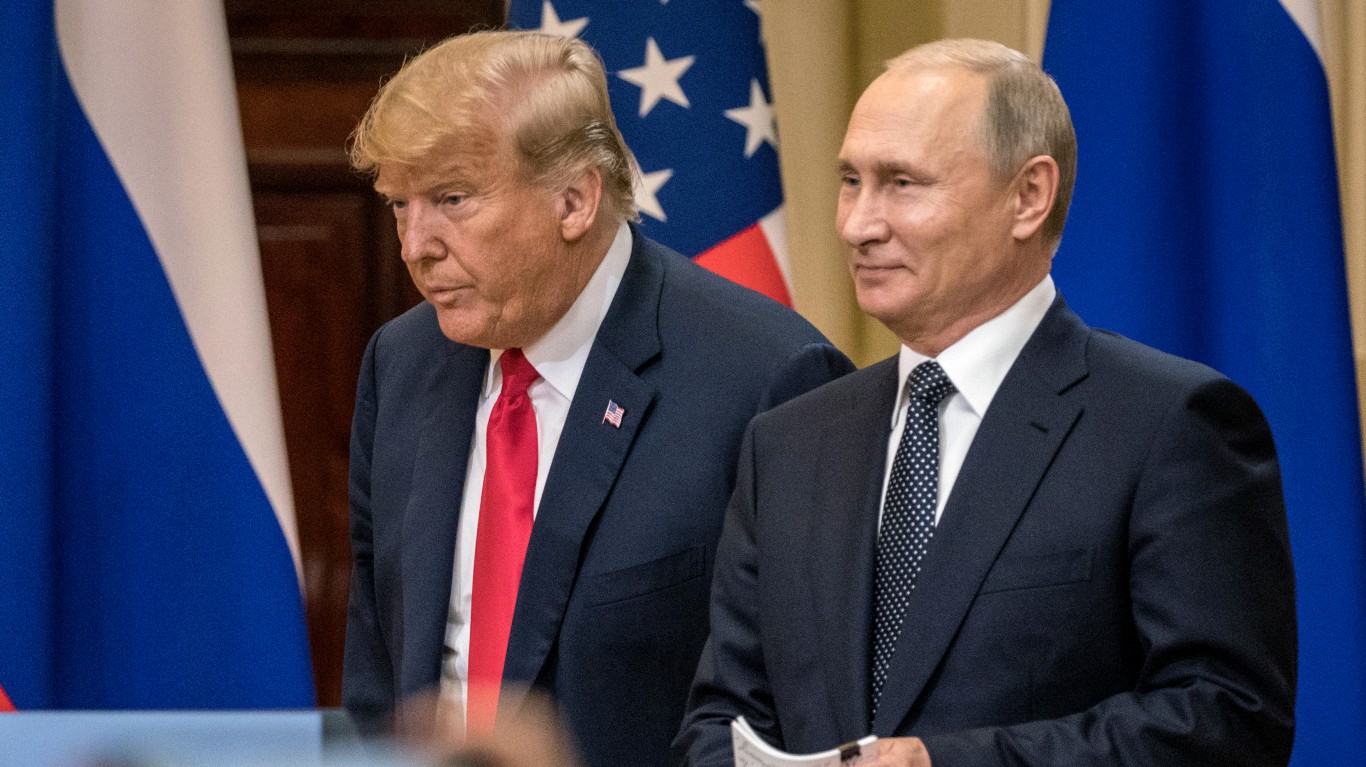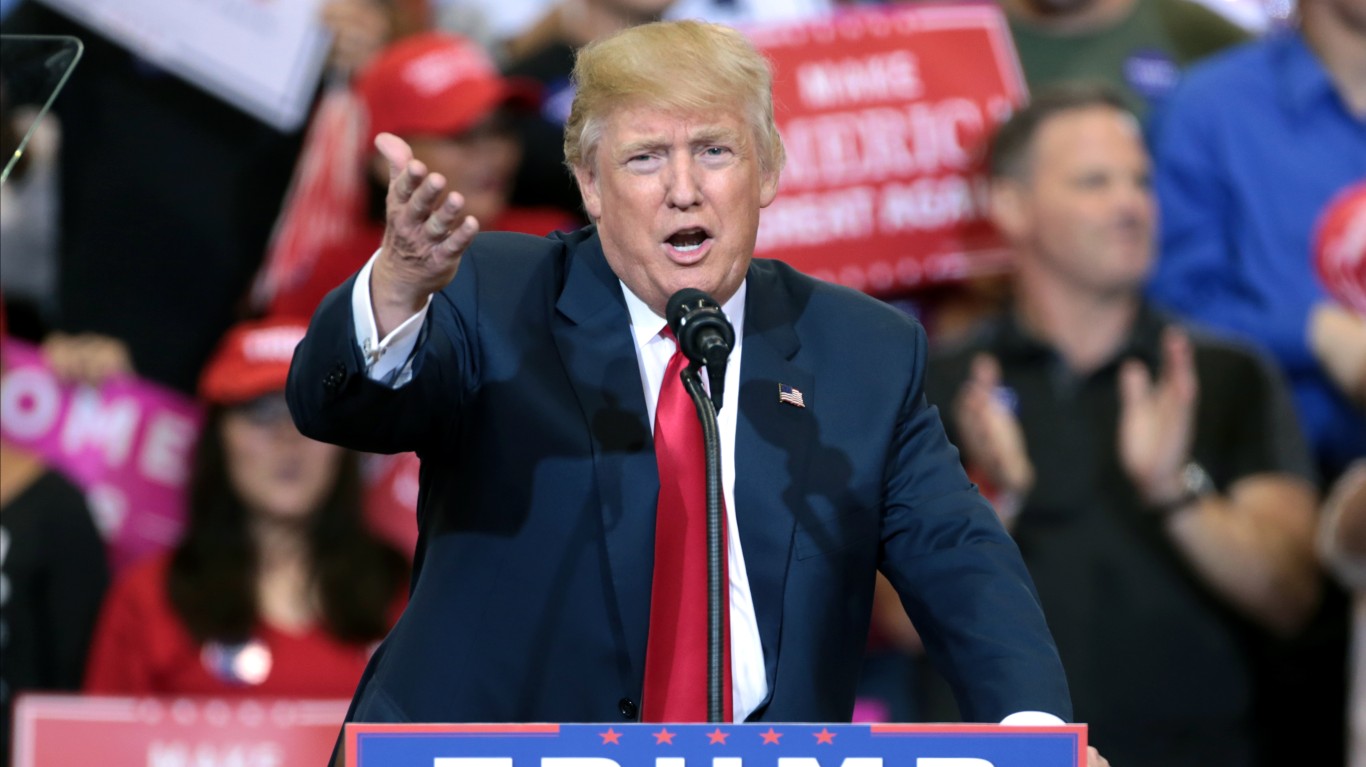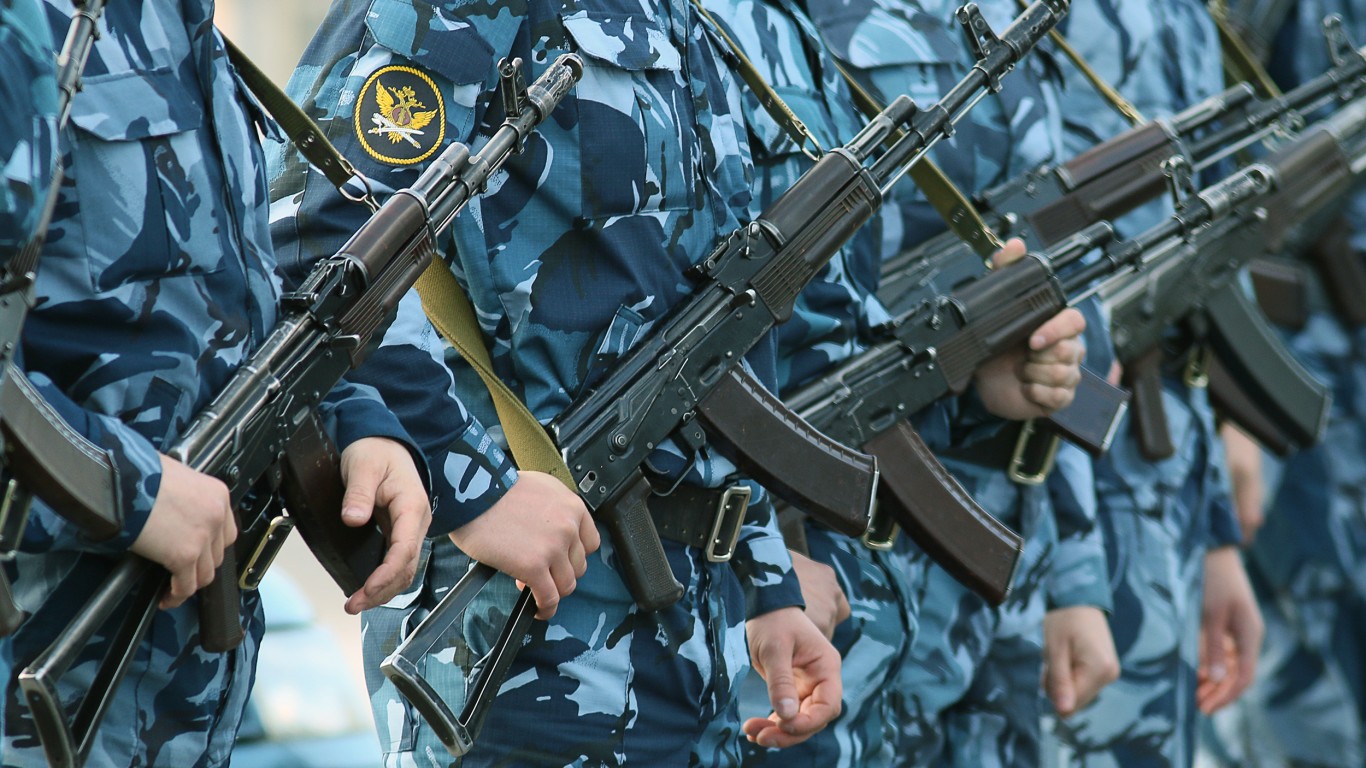
Donald Trump defied expectations to regain the presidency in November 2024. He will be the first president to serve non-consecutive terms since Grover Cleveland. Though primarily concerned with domestic affairs, Trump’s presidency will be felt across the world. The ongoing conflict in Ukraine’s outcome will likely rest on the decisions of the Trump administration. This article will examine what the incoming administration may have in store for Ukraine.
Why This Matters

The economy might have been the primary focus of Trump’s successful re-election campaign, but Ukraine and other geopolitical disputes will define his second term just as much as domestic concerns. Trump’s first term provides strong hints about the nature of his second, and the political landscape is more favorable than he might have anticipated.
Political Concerns

Against all odds, Trump won the White House, and the down-ballot races also went largely in his favor. The Republicans flipped the Senate and now hold a three-seat majority. The GOP also retained control of the House of Representatives. However, the Senate majority is not enough to overcome the filibuster without reform. Just like the Democrats, the Republicans will be hesitant to pull that trigger. Legislation in the upper chamber will still require some cross-party negotiation, and several more bipartisan members lost their elections.
The House majority is even more precarious, and with some members tapped for positions in the incoming administration, the Republicans have very little wiggle room to get things done. Trump also held the trifecta in his first term but still struggled to pass his agenda. Still, if Trump’s position vis-a-vis Ukraine is more hands-off, then navigating Congress won’t particularly matter.
Ukraine’s Victory Plan

In October 2024, Ukrainian President Voldomyr Zelenskyy unveiled his five-point victory plan to the Ukrainian parliament. As with an earlier proposal, Kyiv is clear on its refusal to give up any territory. The stated aim is the restoration of Ukraine’s 1991 borders. Additionally, three secret annexes are only available to select partners. The Ukrainian leader met with both presidential candidates prior to the election to present his plans for achieving victory and securing lasting peace against Russia. The plan calls for an invitation for Ukraine to join NATO, something Kyiv has long sought but faces opposition within the alliance. Other key members are open to Ukraine joining the alliance, but not while the conflict with Russia continues.
A second key point is faster delivery of weapons and removing restrictions on their use. While several international partners have been quick to pledge support, the promised equipment has been slow to arrive. It took years for F-16s to arrive in Ukraine, and some donor nations have attached conditions to their use. Similarly, long-range munitions with no constraints could open up strategic targets for Ukraine to inflict considerable damage on Russia’s war effort.
Points three and four refer to deterring future Russian aggression and rebuilding Ukraine’s economy. The last point calls for deploying battle-hardened Ukrainian troops across Europe to share their recent combat experiences and eventually replace US troops stationed on the continent.
Russia’s Demands

Russia’s ultimate war aims are still the subject of some confusion. When the anticipated swift victory did materialize, Moscow revised its position. While Ukraine is adamant that its occupied territory must be liberated, Russia has a little more flexibility in what it seeks to gain from the conflict.
In June 2024, Vladimir Putin offered a ceasefire and to begin peace talks if Ukraine withdrew from the four regions claimed by Russia. The offer was also conditional on Ukraine not joining NATO. Unsurprisingly, the offer was flatly rejected. More recently, Russia has indicated a willingness to work with the Trump administration to reach a peace based on “the realities on the ground.” A treaty based on the current situation is considerably more favorable to Moscow, even though Ukraine still occupies parts of Kursk.
Trump’s Peace Proposals

On the campaign trail, Trump promised a swift end to the war, though he refrained from offering specific details. His skepticism toward NATO is well-known, and though there is a fair amount of support for Ukraine on his side of the aisle, Trump is unlikely to authorize any further military aid to Kyiv. Shortly after his electoral victory, some speculative details of what a Trump-backed peace plan might look like emerged.
As a Trump insider suggested, Crimea is almost certainly lost forever, and any peace deal will have to be realistic. There are suggestions Ukraine’s NATO membership will be put on a twenty-year hiatus and that European allies will man an 800-mile buffer zone between the two adversaries. Under the proposal, the US would not play any active role in policing the border. Ukraine is unlikely to agree with any territorial concessions willingly, but it may not have a choice if military aid from the United States ceases. Europe simply cannot make up for the arms shortfall.
Peace Prospects

Ukraine and Russia are far apart in their respective demands. After two years of war, neither side is close to achieving their stated aims. Ukraine defied expectations to resist the onslaught for as long as it did, but since pivoting to an attritional strategy, Russia is making slow but steady gains.
Ukraine’s Kursk gambit helped draw Russian troops away from the front, but invading Russian territory gave North Korea the green light to get involved in the war. At least 10,000 North Korean troops arrived to assist in Kursk ahead of a planned offensive. With Ukraine rapidly running out of men, Pyongyang’s intervention could scarcely have come at a worse time. With some weeks before Trump’s second term begins, Russia and Ukraine will see the next few weeks as a key time to improve their respective bargaining positions. Ukraine will bitterly resist any American overtures to give up any territory. Russia will certainly not want to withdraw from any land it currently holds.
Ukraine faces a tough choice in the coming months. As unpalatable as accepting peace based on the current situation may be, restoring its 1991 borders isn’t a realistic aim. Worse, their bargaining position may soon weaken if the Russian-North Korea counteroffensive in Kursk succeeds and drives out Ukrainian forces. As the war drags on, public opinion moves away from Kyiv, and allies grow weary. Even Ukrainian public opinion is beginning to veer towards a diplomatic solution to the war.
Conclusion

Ukraine was hardly a focal point of the 2024 presidential election. However, the choice made by the American voters will have a major impact on the war’s outcome. The Harris campaign offered a continuation of Biden’s policies, but this approach was clearly rejected at the ballot box. Even if Harris had prevailed, a divided legislature would have made sending more aid to Ukraine difficult.
Trump promised a swift end to the war, and with the government trifecta, he has few political barriers to pursuing that aim. Further military aid will almost certainly halt once Joe Biden exits the White House, and European nations cannot continue to sustain Ukraine’s war effort without the United States. Worse, several European countries previously supportive of Kyiv are having second thoughts as the populist right gains traction across the continent.
Whatever deal is worked out will not be received well by Ukraine, but restoring the 1991 borders is not on the cards. Even a Harris victory wouldn’t have made recovering Crimea any more likely. It’s possible that a slow trickle of support would only prolong the agony. Trump may not get his wish to end the war immediately, but he will have a big say in Ukraine’s future when the peace talks begin.
Take Charge of Your Retirement In Just A Few Minutes (Sponsor)
Retirement planning doesn’t have to feel overwhelming. The key is finding expert guidance—and SmartAsset’s simple quiz makes it easier than ever for you to connect with a vetted financial advisor.
Here’s how it works:
- Answer a Few Simple Questions. Tell us a bit about your goals and preferences—it only takes a few minutes!
- Get Matched with Vetted Advisors Our smart tool matches you with up to three pre-screened, vetted advisors who serve your area and are held to a fiduciary standard to act in your best interests. Click here to begin
- Choose Your Fit Review their profiles, schedule an introductory call (or meet in person), and select the advisor who feel is right for you.
Why wait? Start building the retirement you’ve always dreamed of. Click here to get started today!
Thank you for reading! Have some feedback for us?
Contact the 24/7 Wall St. editorial team.




